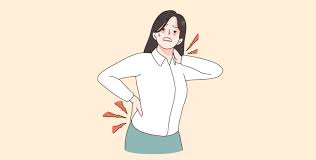Chronic pain is one of the most common conditions, affecting roughly one in every five persons in the United States. A significant majority of these individuals suffer from persistent neuropathic pain. Another study discovered that neuropathic pain affects more women than men, with a pain frequency rate of 8% and 5.7%, respectively, in those over the age of 50. Yet with such a high prevalence, many people are unaware of what it is or how to cure it. Because of its unexpect nature, it has been dubbed a “hidden pandemic.
Thankfully, severe neuropathic pain does not necessarily signal a potentially fatal disease. Some patients with neuropathy may have modest and controllable symptoms that may be treat with conservative measures like as medication or physical therapy. Here’s all you need to know about neuropathic pain and how to treat it.
What exactly is neuropathic pain?
Neuropathic pain is cause by injury to the peripheral or spinal nerves, which transmit information from the skin, muscles, and other body components to the brain and spinal cord. Shooting, burning, tingling, numbness, and pins and needles are common descriptions of the discomfort.
Despite their complex symptoms, somatosensory system lesions or abnormalities are the most common causes of neuropathic pain. It is often resistant and may be quite severe. Additional factors include:
Alcoholism
Cancer and its therapies
Infections caused by viruses
Diabetic trauma or nerve-damaging surgeries
Vascular anomalies
Shingles
Neuropathic pain types:
The many forms of neuropathic pain vary according to the bodily areas and nerves involve. When just one nerve is harmed, this is known as mononeuropathy, while injury to many nerves is known as polyneuropathy. The many forms of neuropathic pain and the bodily areas they impact are as follows:
Neuropathy in the priphery
Peripheral neuropathy is a neurological condition that affects your hands, feet, toes, arms, and legs. People with peripheral neuropathy often report muscular weakness and decrease cutaneous sensitivity.
PN is distinct from other types of nerve injury in that it affects multiple peripheral nerves at once. Even if one bodily component can send messages to the brain, another may be inactive.
Neuropathy autonomic
Autonomic neuropathy is a disorder in which the autonomic nerve system is damage. Damage is often episodic and intermittent. This has an unpredictable deleterious impact on spinal cord signals. Dry eyes, uncontrolled reflexes, and difficulties with bladder function are all symptoms of problems with this system.
Neuropathy with a focus
A neurological condition affecting one or more body parts is known as focal neuropathy. It is mostly cause by trauma or infection and affects muscles around the injured nerve.
When you have focal neuropathy, you may feel numbness, tingling, burning sensations, and even pain around the afflicted area. If you have these symptoms and are unclear what they signify, see an ophthalmologist or neurologist.
Neuropathy proximal
Proximal neuropathy is a disorder that causes patients to lose sensation in their extremities. This nerve injury causes numbness, tingling, or pins and needles sensations to develop in the fingers or hand. This condition may make it difficult to execute daily living and self-care chores, in addition to walking issues.
Neuropathy in diabetes
Diabetic neuropathy is a diabetic complication that causes nerve damage. This nerve damage may affect any part of your body, although the feet are the most often affected. The symptoms may be mild at first and go unnoticed, but they may increase with time. Mobility problems are common in people with DN.
How is neuropathic pain care for?
The majority of neuropathic pain will subside with time. Doctors, on the other hand, may offer transcutaneous electrical nerve stimulation (TENS) therapy for chronic neuropathic disorders.
Additional treatment options include pain relievers, and in certain circumstances, surgery is require. In addition, the most common treatments are summarised below;
Anti-epileptics
Anti-depressants /Acupuncture
Partnering with a neuropathic pain expert provides a long-term solution that does not entail surgery or drugs. Amitriptyline and other tricyclic antidepressants, as well as anti-epileptic drugs such as Tapaday 200 and pregalin 50 mg, are especially effective nerve pain relievers.
Visit: teriwall.com

